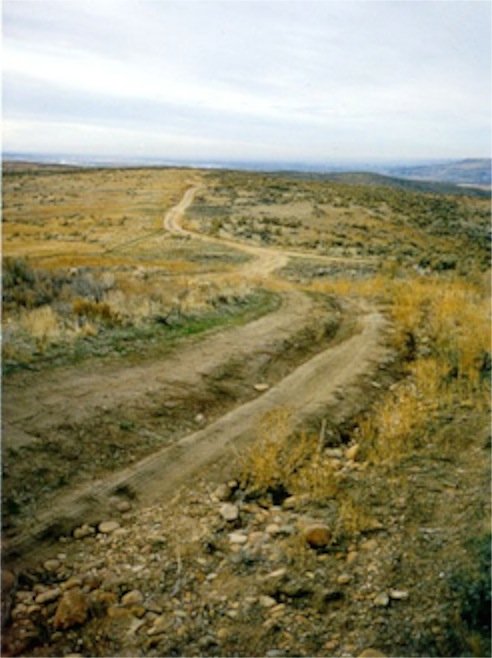Along the trail
22/05/13 05:41

History is always reported from a point of view. I have known for a long time that the story told about the westward movement of predominantly European peoples has a “cowboy” version and an “Indian” version. Those wagon trains looked differently depending on whether you were a settler headed west or a resident watching the influx of people.
I grew up along the Bozeman trail. The Bozeman trail was relatively late in the process of what was called the “great migration” of settlers along the Oregon Trail. The discovery of gold in Montana led to a shortcut from the main Oregon Trail. The Bozeman trail headed north from the North Platte River across the Powder River Basin heading to the gold fields of Montana. Compared to the main Oregon Trail, the travel along the Bozeman trail was relatively light. Only about 3,500 immigrants took that route. But from the perspective of the northern plains tribes, the trail was an incursion on their last and best hunting grounds. Eventually the trail required a military occupation of the region, conflicts including the Battle of the Little Bighorn, and the Fort Laramie Treaty that officially declared the trail to be abandoned. These days you can travel an Interstate Highway that follows the historic trail part of the way.
I can show you a few places where the wagon ruts from the old trail are still visible on the hillsides.

The promise of the trail was a new home in the rich farmlands of the Willamette Valley in Oregon. To get there, immigrants had to cross the Rockies, a task not easily accomplished during the summer and impossible during the winter with a wagon. The route of the trail was strewn with items left behind as the settlers lightened their loads and learned to live without some of their prized possessions. It was also dotted with grave sites of those who succumbed to illness along the way and died far from medical treatment.
The participants in the great migration of 1843 faced an uncertain trail. There was a debate about whether or not the wagons could make it all the way to Oregon. Some claimed that they would have to abandon the wagons and proceed on horseback when they got to the Blue Mountains. The train was big enough that they managed to clear enough trees to let the wagons pass. However, when they reached The Dalles, Oregon, there was no road around Mount Hood, so the wagons were disassembled and floated down the Columbia. It was three more years before the Barlow Road was completed around Mount Hood allowing a wagon to make the entire journey overland.
The completion of the transcontinental railroad in 1869 provided a safer and much faster way to journey west. In most cases it ended up being less expensive to ride the train as well. 2,000 miles is a long summer’s journey with an ox team. They travel about 2 two 3 miles an hour and the driver usually walked to the left side of the oxen. A whole summer on a diet of bacon, biscuits, beans and coffee would have been an adventure in itself. Guides typically required settlers to carry all of their food with them, rather than rely on hunting along the way. Some settlers herded cattle and sheep and butchered animals along the way for additional food.
The settlement of the West Coast of the United States by immigrants forever changed not only the lands settled but also the lands the settlers crossed. How that great movement of people is viewed depends upon your point of view. If your family was among the settlers, you see it differently than if you descended from one of the tribes whose land was crossed and whose way of life was disrupted. There is still room for more information and interpretation of the events.
Who we are today is a product of events that occurred long before we were born. And if you study history enough, you become aware that what we do today will shape the lives of those yet to be born. Like the settlers on the trail, we belong to a great stream. Ours travels in time, from the past to the future. We occupy a very small amount of time in a much bigger picture.